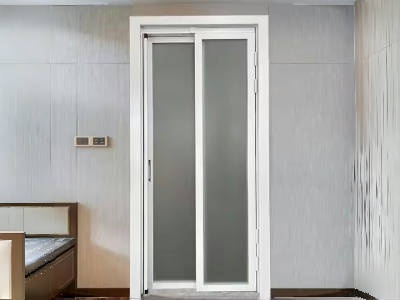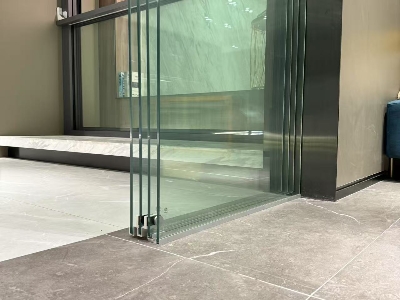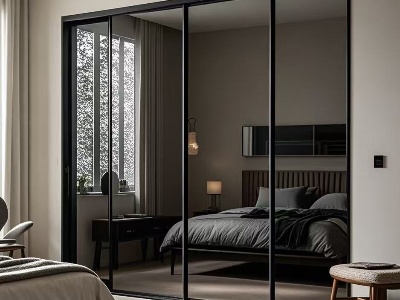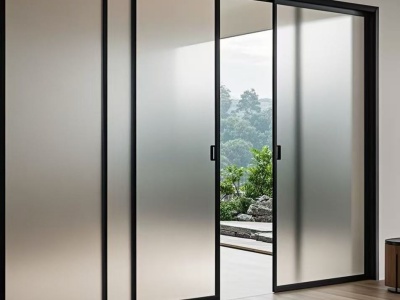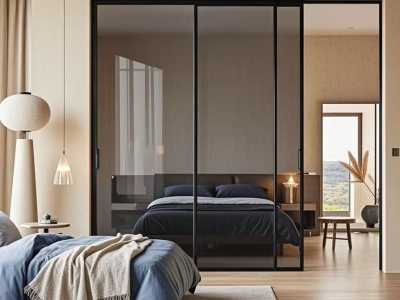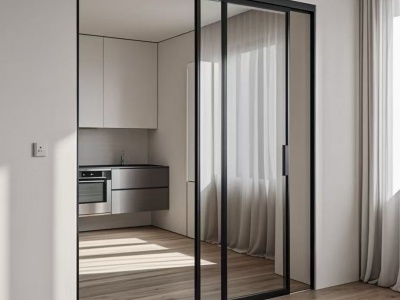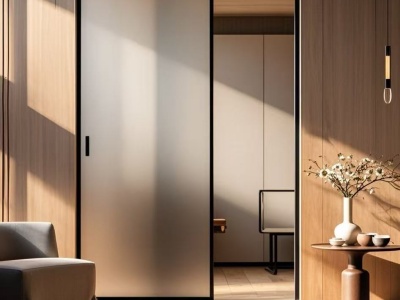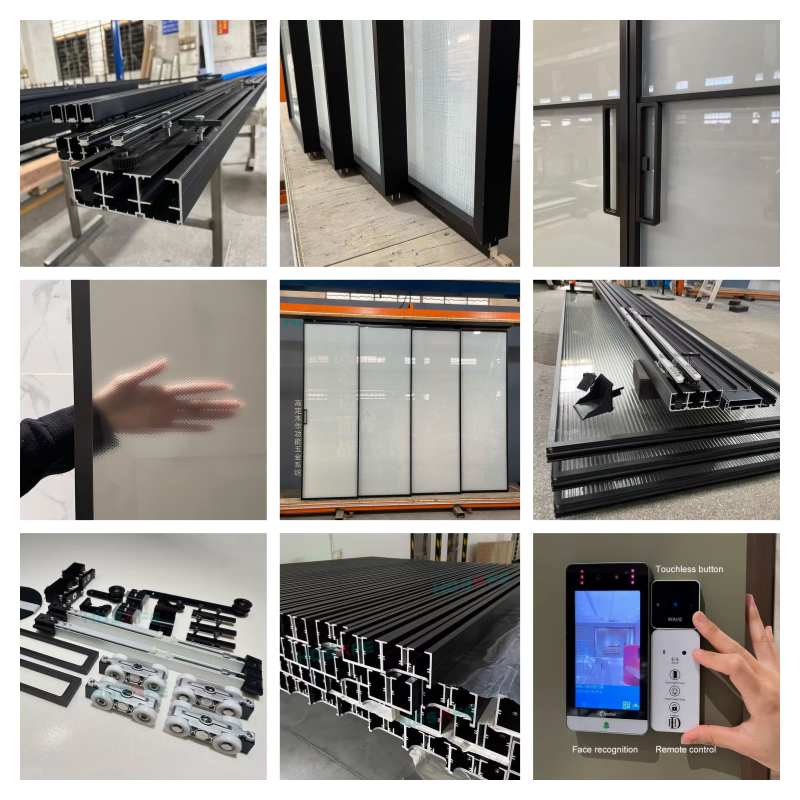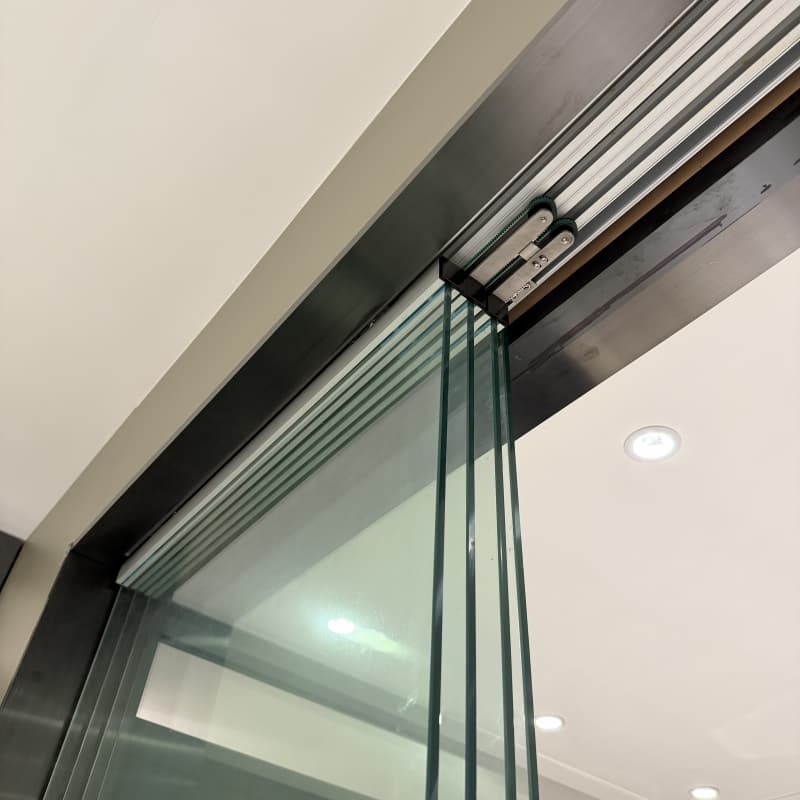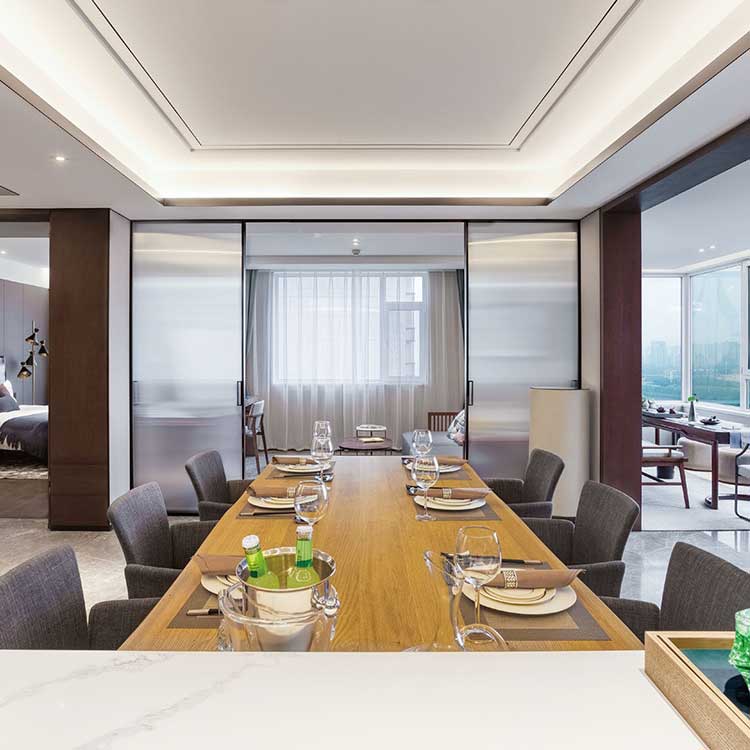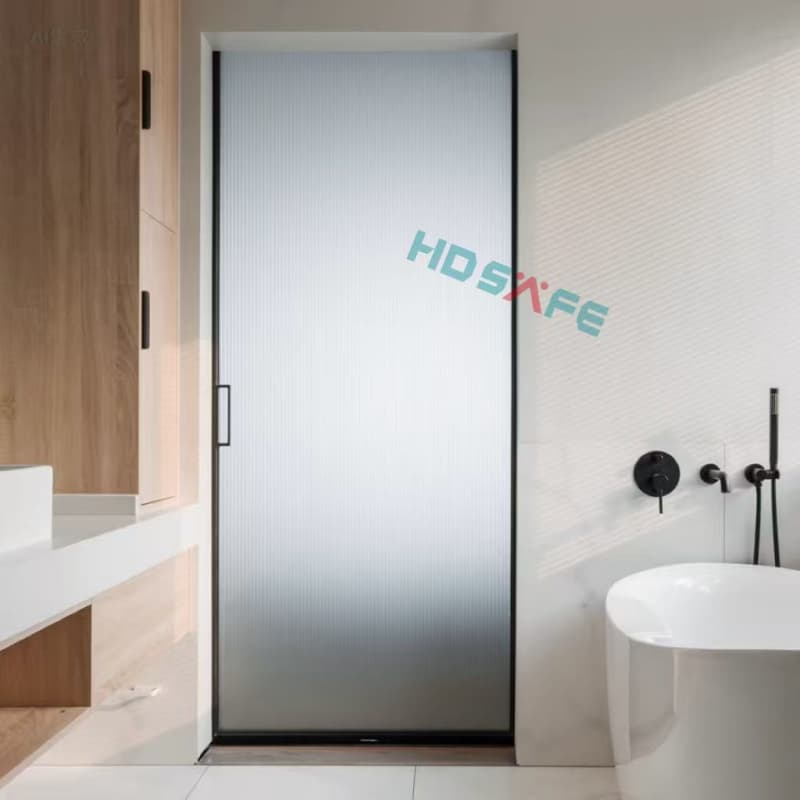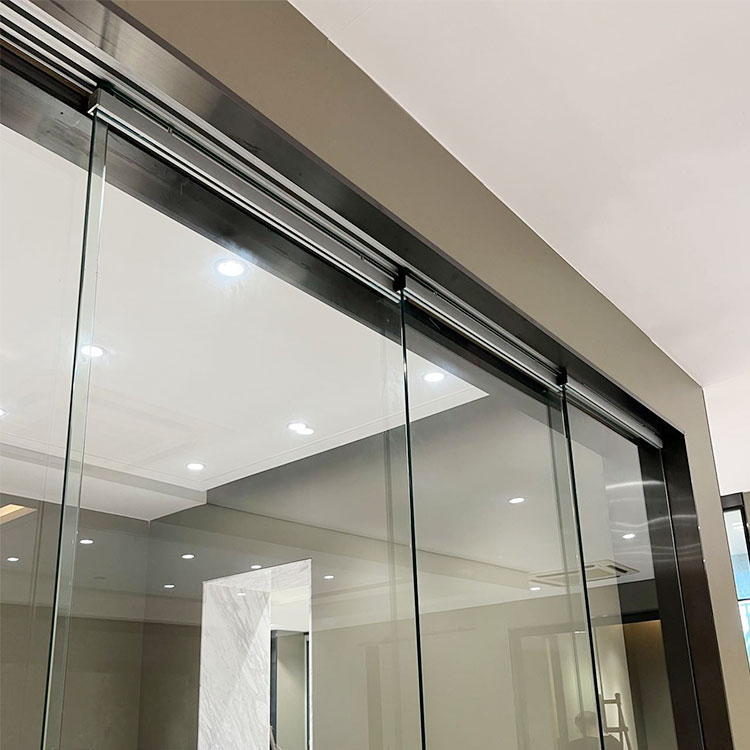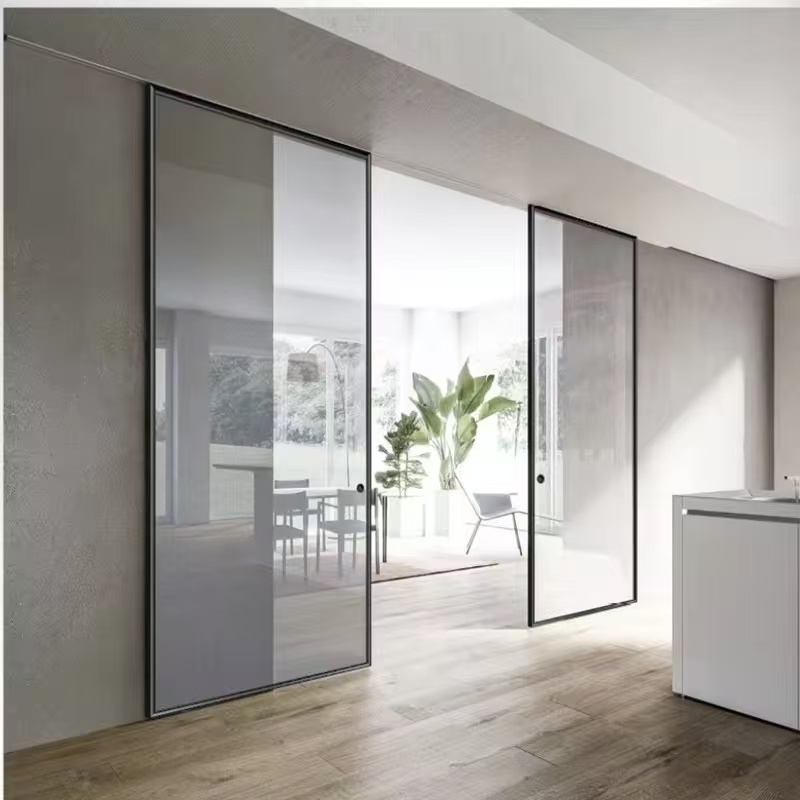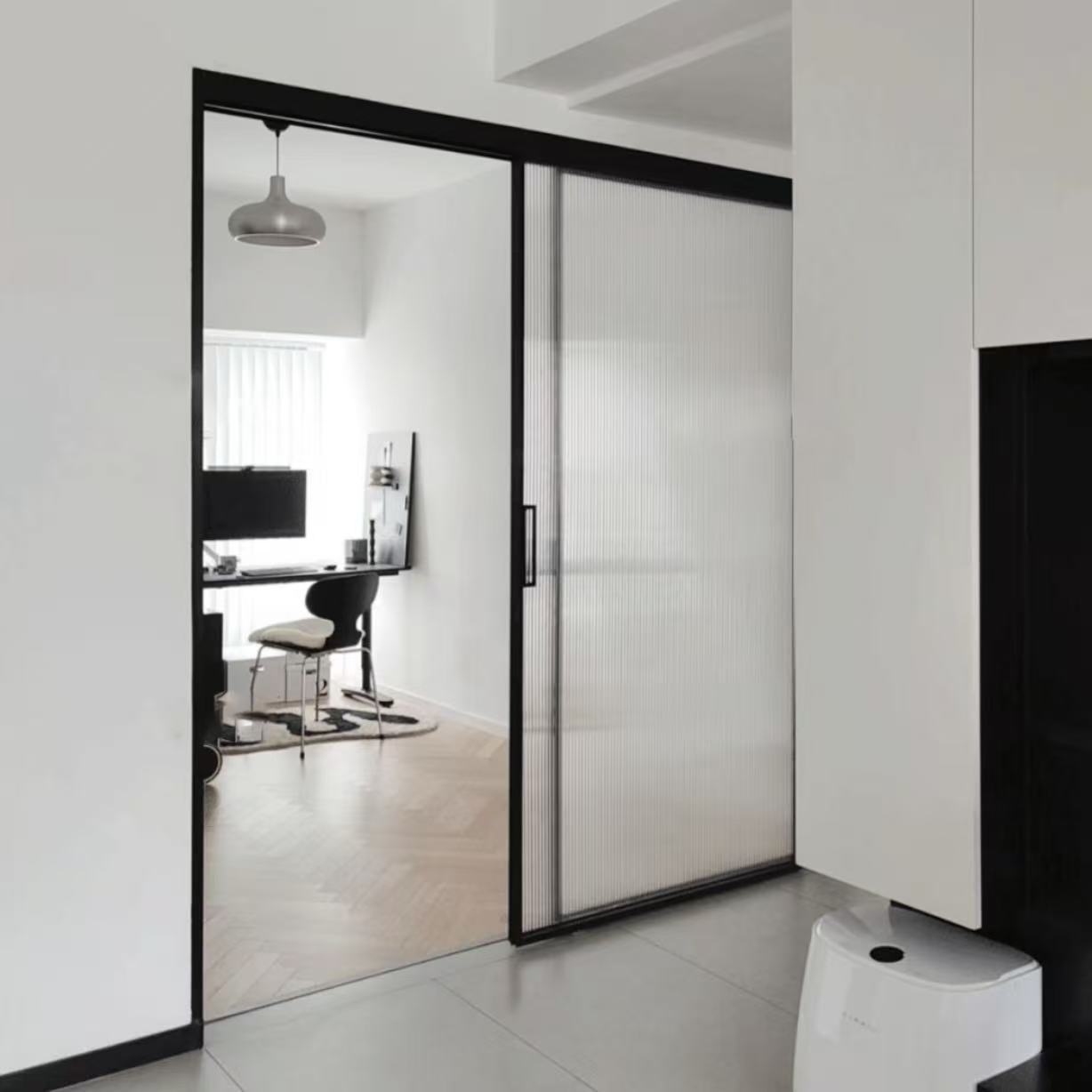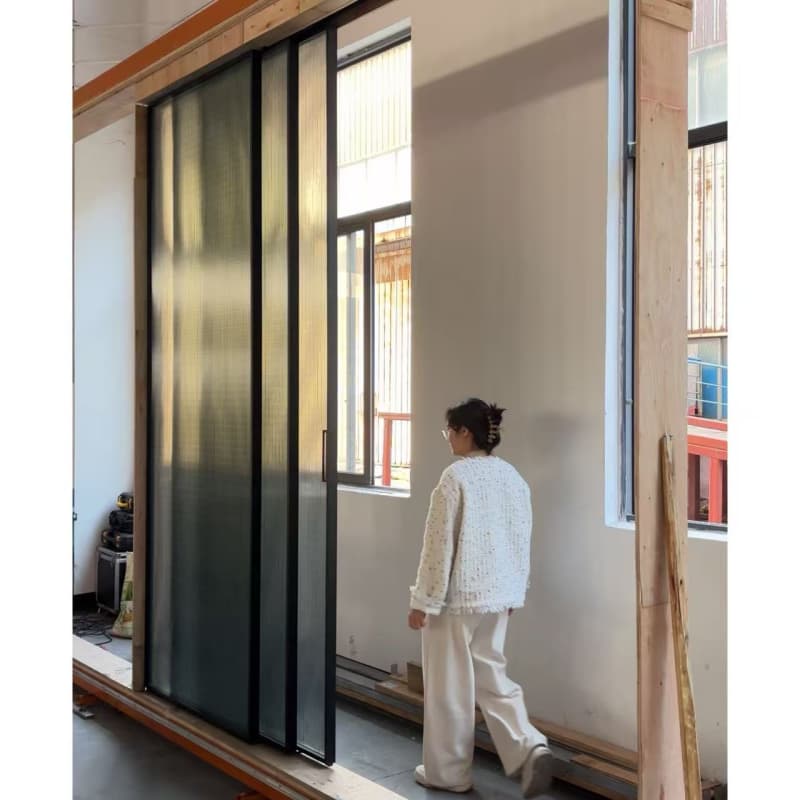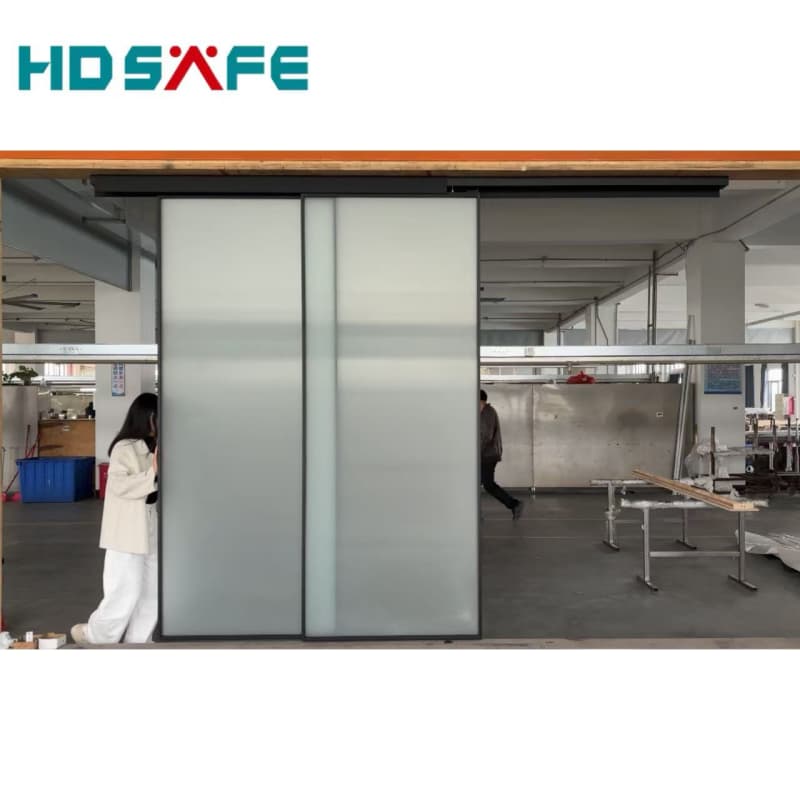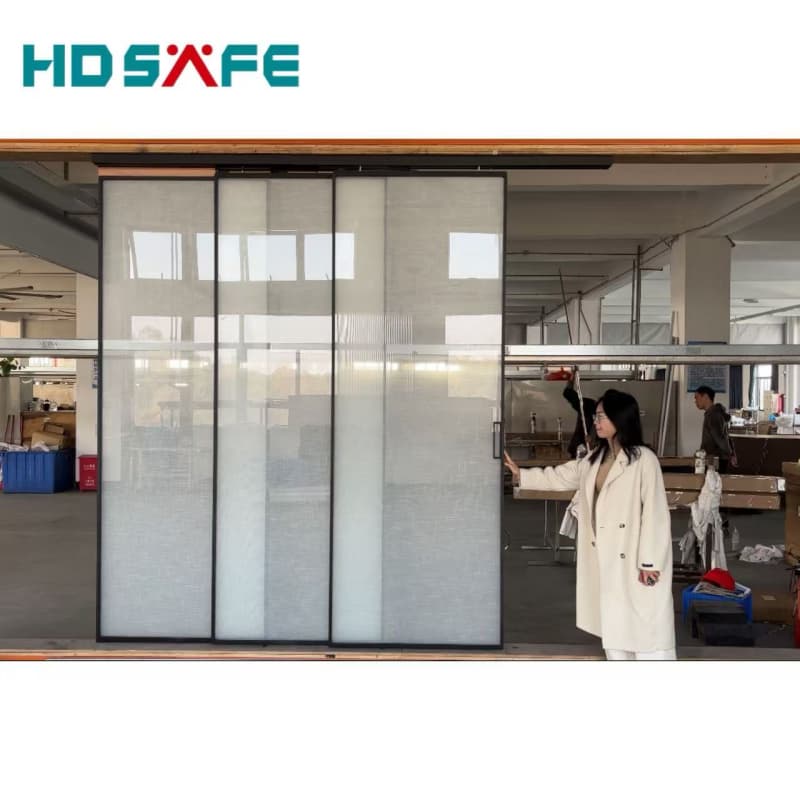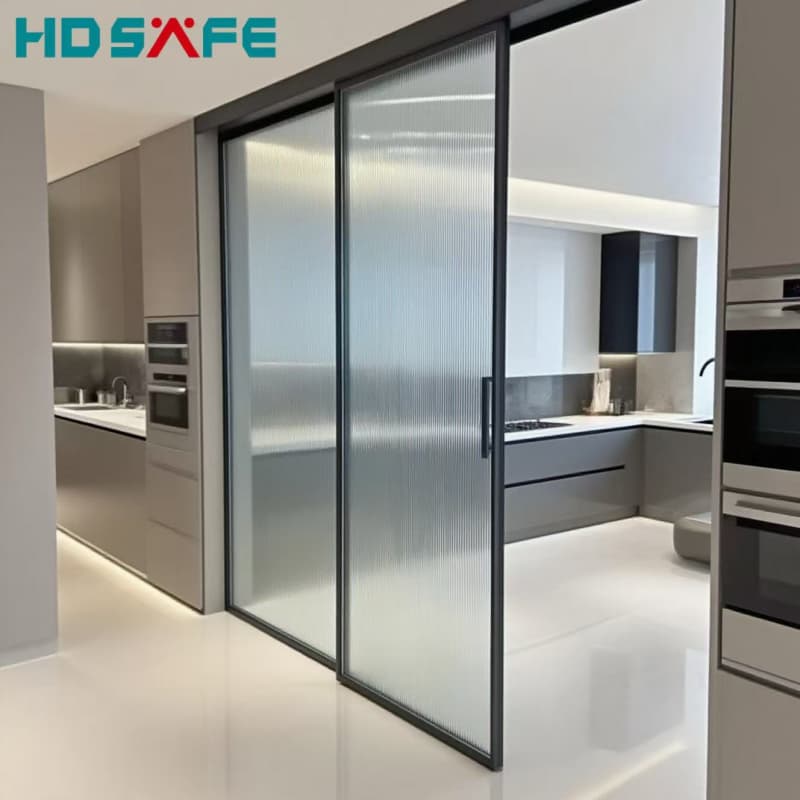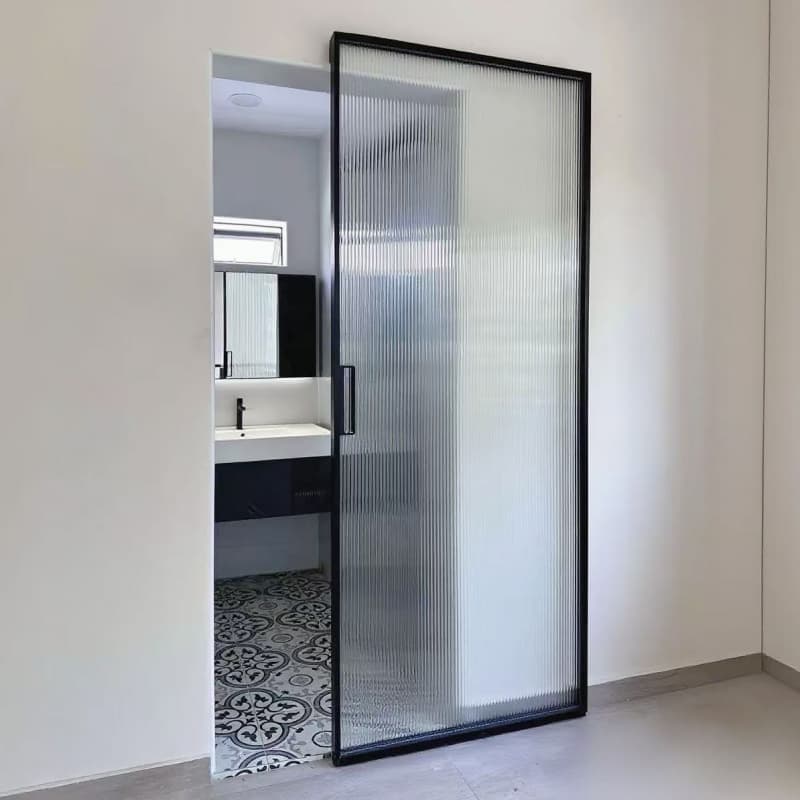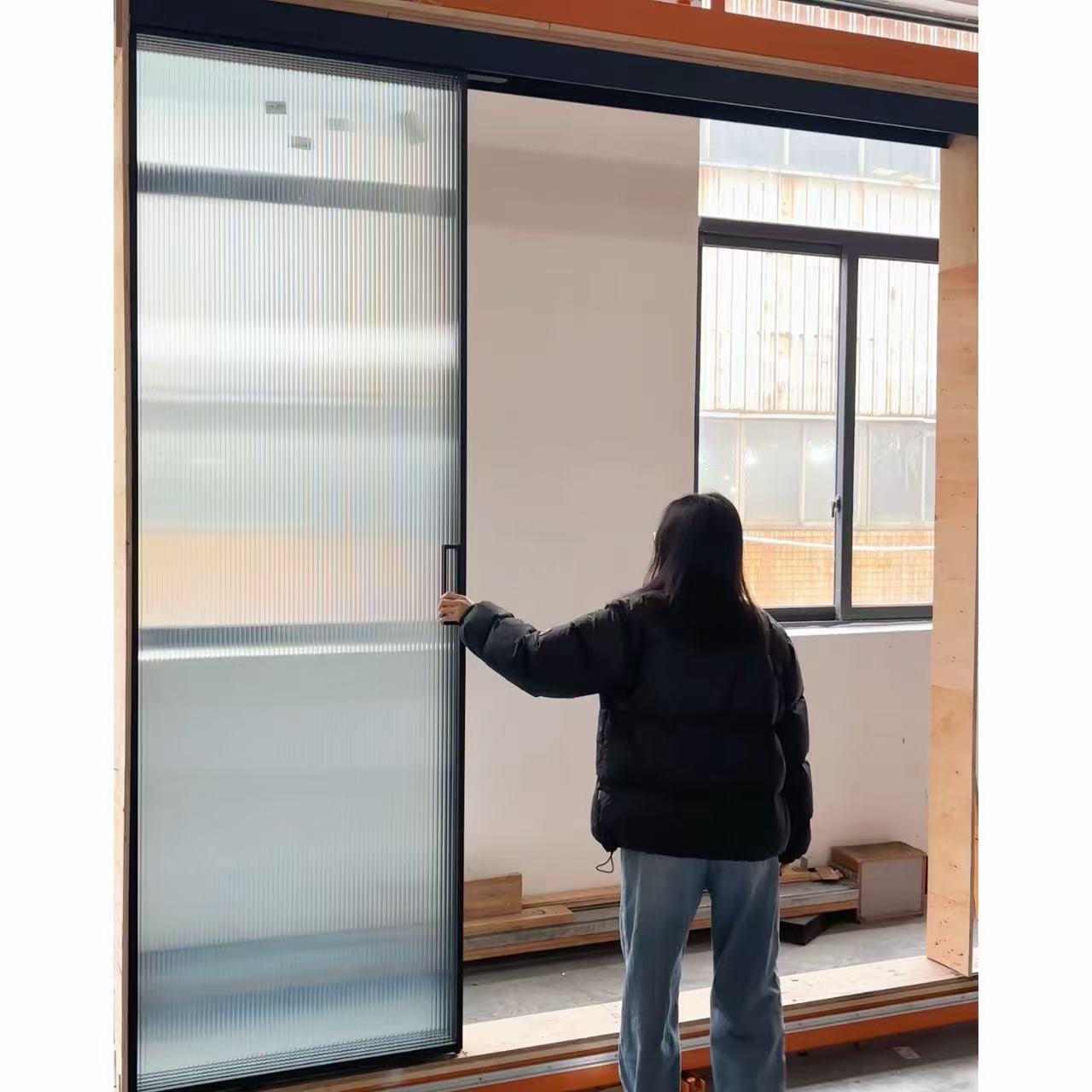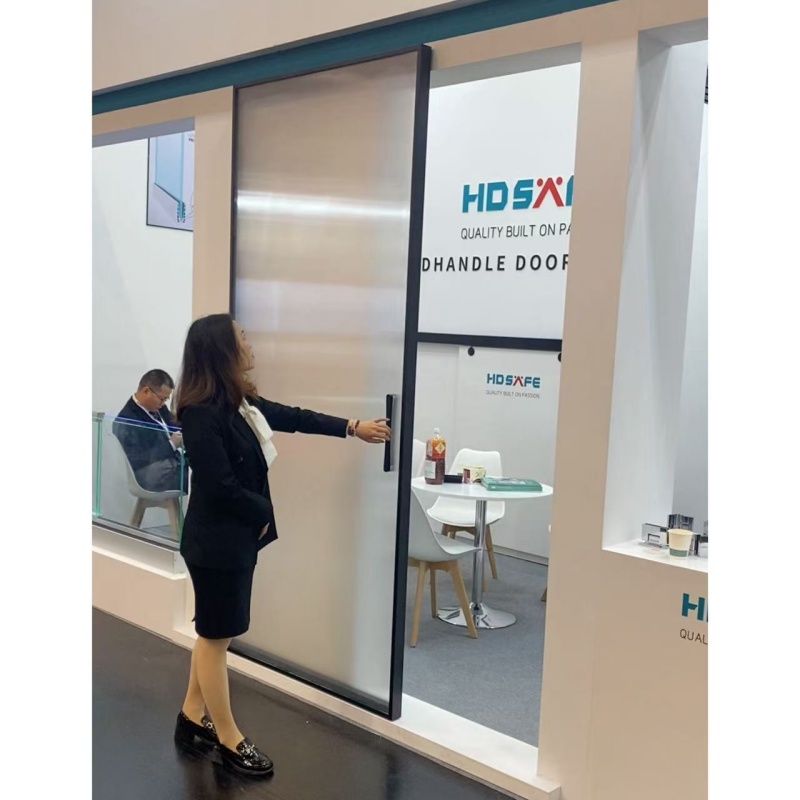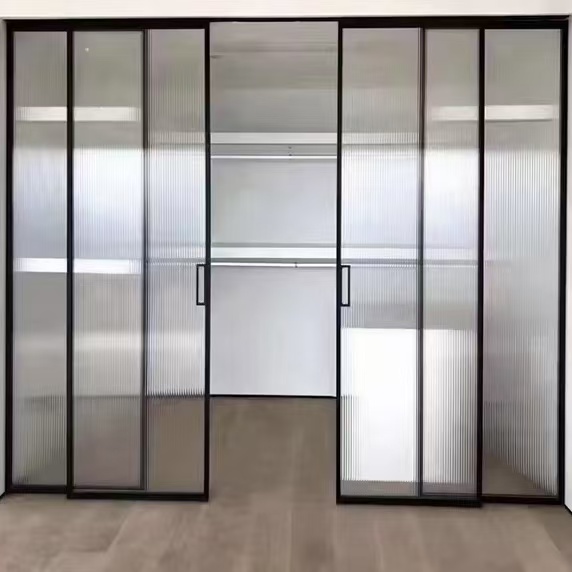The Comprehensive Guide to Automatic Sliding Door Sensors: Technology, Applications, and Future Trends
Automatic sliding doors have become an ubiquitous feature in modern architecture, seamlessly blending functionality with convenience. At the heart of these doors lies the automatic sliding door sensor, a sophisticated device that ensures smooth operation, safety, and energy efficiency. This article delves into the intricacies of automatic sliding door sensors, exploring their types, working principles, applications, and future trends. By understanding the technology behind these sensors, we can appreciate their role in enhancing our daily lives and the potential they hold for future innovations.
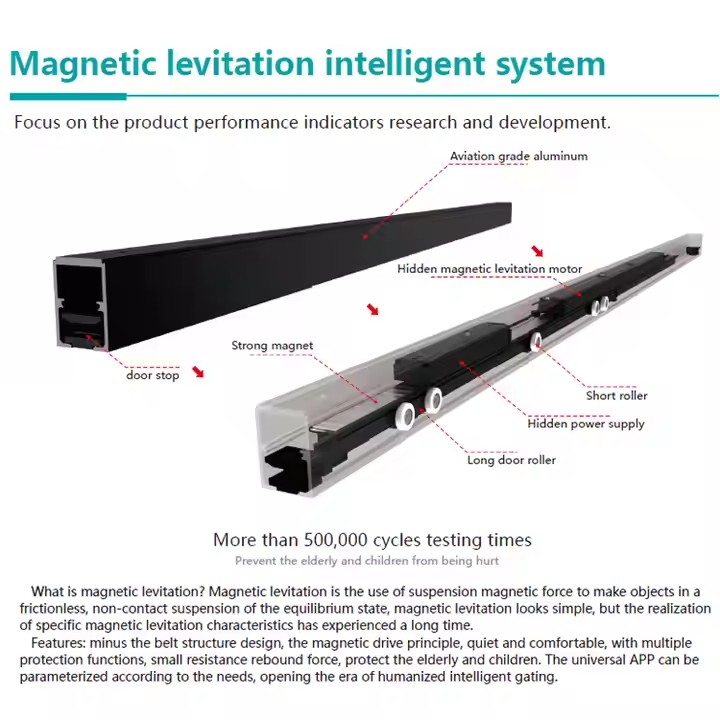
Introduction
Automatic sliding doors are a staple in commercial buildings, hospitals, airports, and even residential complexes. They offer a hands-free experience, allowing people to pass through effortlessly. The key to their seamless operation lies in the automatic sliding door sensor. These sensors detect the presence of individuals or objects and trigger the door to open or close accordingly. This article provides a comprehensive overview of automatic sliding door sensors, covering their types, working mechanisms, applications, and future advancements.
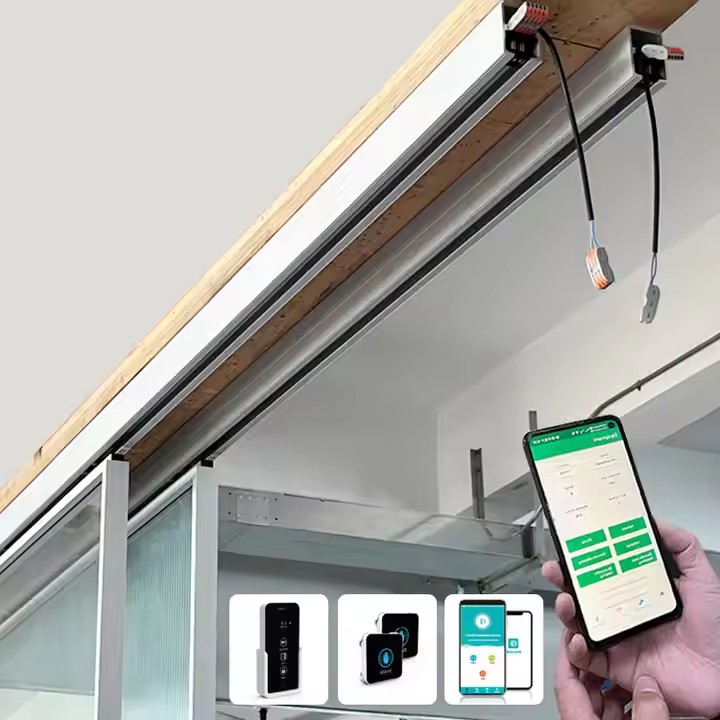
Types of Automatic Sliding Door Sensors
Infrared Sensors
Infrared (IR) sensors are among the most commonly used sensors in automatic sliding doors. They work by emitting infrared light and detecting any interruptions in the light beam. When an object or person crosses the beam, the sensor triggers the door to open. IR sensors are further categorized into two types:
Active Infrared Sensors
Active IR sensors emit an infrared beam from an emitter and detect any interruptions using a receiver. These sensors are highly sensitive and can detect movement even at a distance. They are ideal for high-traffic areas where quick detection is essential.
Passive Infrared Sensors
Passive IR sensors do not emit any light but instead detect infrared radiation emitted by warm objects, such as the human body. They are cost-effective and commonly used in residential and low-traffic commercial settings. However, they may have limited range and sensitivity compared to active IR sensors.
Ultrasonic Sensors
Ultrasonic sensors use high-frequency sound waves to detect movement. They emit ultrasonic waves that bounce off objects and return to the sensor. By analyzing the time it takes for the waves to return, the sensor can determine the presence and distance of an object. Ultrasonic sensors are known for their ability to detect movement even in the dark and through obstacles, making them versatile for various applications.
Microwave Sensors
Microwave sensors operate by emitting microwave signals and detecting any changes in the frequency or phase of the reflected signal. They are highly sensitive and can detect movement through non-metallic materials such as glass and plastic. Microwave sensors are often used in environments where other sensors may not perform well, such as areas with heavy air circulation or high humidity.
Laser Sensors
Laser sensors use laser beams to detect movement with high precision. They are capable of detecting even the smallest changes in distance and are often used in applications requiring high accuracy, such as in industrial automation. Laser sensors are more expensive than other types of sensors but offer superior performance in specific scenarios.
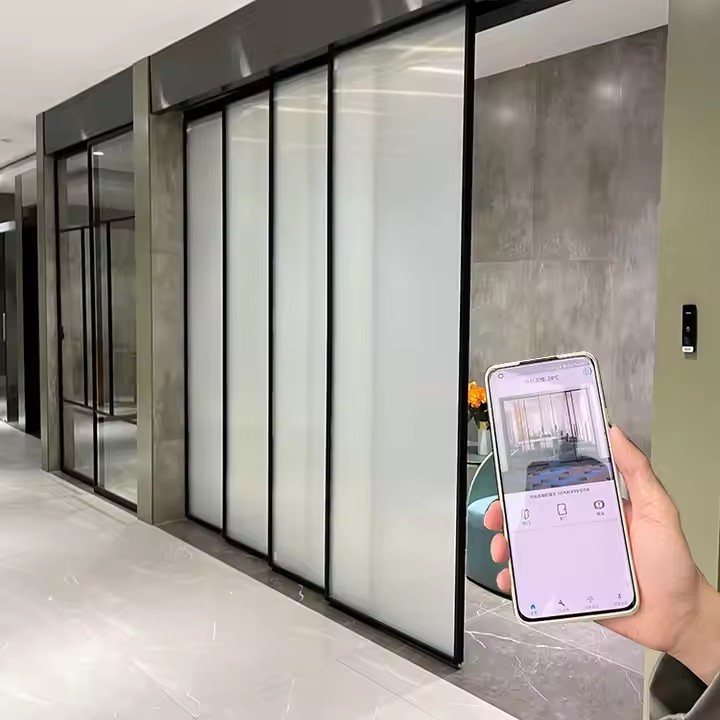
Working Principles of Automatic Sliding Door Sensors
Detection and Signal Processing
Automatic sliding door sensors operate by detecting the presence of an object or person and sending a signal to the door control system. The sensor emits a signal (infrared, ultrasonic, microwave, or laser) and waits for a response. When the signal is interrupted or reflected back, the sensor processes the information and determines if the door should open or remain closed.
Signal Transmission and Control
Once the sensor detects movement, it sends a signal to the door control system. This system interprets the signal and activates the motor to open or close the door. The control system also manages the speed and timing of the door's movement, ensuring smooth and safe operation. In some cases, the system may include additional safety features, such as sensors to detect obstacles and prevent the door from closing on a person or object.
Safety Features and Redundancy
Safety is a critical aspect of automatic sliding door sensors. Most sensors include multiple safety features to prevent accidents. For example, some sensors are equipped with both infrared and ultrasonic components to ensure reliable detection. Additionally, doors are often equipped with sensors that detect obstacles and prevent the door from closing if something is in the way. Redundancy in sensor systems ensures that if one sensor fails, another can take over, maintaining the door's functionality.
Applications of Automatic Sliding Door Sensors
Commercial Buildings
Automatic sliding doors are a common sight in commercial buildings, providing a seamless and convenient entry and exit point for customers and employees. In large office complexes and shopping malls, automatic sliding doors with sensors help manage high foot traffic efficiently. The sensors ensure that doors open and close quickly, reducing congestion and improving the overall customer experience.
Hospitals and Healthcare Facilities
In hospitals and healthcare facilities, automatic sliding doors play a crucial role in maintaining a sterile environment and facilitating the movement of patients and medical staff. Sensors in these doors can detect the approach of a wheelchair or gurney, ensuring that the doors open wide enough to accommodate them. Additionally, the sensors can prevent the doors from closing too quickly, which could be hazardous in a hospital setting.
Airports and Transportation Hubs
Airports, train stations, and bus terminals are high-traffic areas where automatic sliding doors with sensors are essential. These sensors help manage the flow of passengers, allowing for quick and efficient movement through terminals. In some cases, the sensors can be integrated with access control systems, ensuring that only authorized personnel can enter restricted areas.
Residential Buildings
In residential buildings, automatic sliding doors with sensors provide convenience and accessibility for residents, particularly the elderly and disabled. These doors can be equipped with custom sensors that detect the presence of a person and open automatically, eliminating the need for manual operation. This is especially useful for individuals with limited mobility or those carrying heavy items.
Industrial Settings
In industrial settings, automatic sliding doors with sensors can improve efficiency and safety in warehouses, factories, and manufacturing plants. These doors can be customized with sensors that detect the presence of vehicles or large machinery, ensuring that the doors open and close without causing disruptions. Additionally, the sensors can help prevent accidents by detecting obstacles and preventing the doors from closing on equipment or personnel.

Future Trends in Automatic Sliding Door Sensors
Integration with Smart Technology
As smart technology continues to evolve, automatic sliding door sensors are likely to become more integrated with other smart systems. For example, sensors could be connected to building management systems to monitor and control door operations remotely. Additionally, sensors could be integrated with IoT (Internet of Things) devices to provide real-time data on door usage, maintenance needs, and energy consumption.
Enhanced Safety Features
Future sensors are expected to include even more advanced safety features to prevent accidents and ensure the well-being of users. For instance, sensors could be equipped with AI (Artificial Intelligence) algorithms to predict and prevent potential hazards, such as detecting a person's speed and adjusting the door's closing speed accordingly. Additionally, sensors could be designed to detect specific objects, such as shopping carts or luggage, and adjust their operation to accommodate these items.
Energy Efficiency
Energy efficiency is a growing concern in modern architecture, and automatic sliding door sensors can play a significant role in reducing energy consumption. Future sensors are likely to be designed to minimize air leakage and heat loss, ensuring that doors close tightly and efficiently. Additionally, sensors could be integrated with energy-efficient motors and control systems to further reduce energy usage.
Customization and Personalization
As the demand for customized and personalized solutions increases, automatic sliding door sensors are likely to offer more options for customization. For example, sensors could be tailored to specific environments or user needs, such as adjusting sensitivity levels based on the type of traffic in a particular area. Additionally, sensors could be designed to work with different types of doors, such as glass, wood, or metal, providing greater flexibility in design and functionality.
Maintenance and Monitoring
Future sensors are expected to include advanced maintenance and monitoring features to ensure optimal performance and longevity. For example, sensors could be equipped with self-diagnostic capabilities to detect and report any issues before they become critical. Additionally, sensors could be connected to remote monitoring systems, allowing maintenance personnel to monitor the status of the doors from a centralized location and address any issues promptly.
Integration with Security Systems
As security concerns continue to grow, automatic sliding door sensors are likely to be integrated with advanced security systems. For example, sensors could be connected to surveillance cameras and access control systems to provide a comprehensive security solution. Additionally, sensors could be designed to detect and respond to potential security threats, such as unauthorized access or suspicious behavior, enhancing the overall security of a building.
Environmental Adaptability
Automatic sliding door sensors of the future are expected to be more adaptable to different environmental conditions. For instance, sensors could be designed to operate effectively in extreme temperatures, high humidity, or dusty environments. This adaptability would make the sensors suitable for a wider range of applications, from outdoor entrances to industrial facilities.
Challenges and Considerations
While automatic sliding door sensors offer numerous benefits, there are also challenges and considerations to keep in mind. One of the primary challenges is ensuring the sensors operate reliably in various conditions. Factors such as weather, temperature, and humidity can affect sensor performance, so it is essential to choose sensors that are designed to withstand these conditions.
Another consideration is the cost of implementing and maintaining automatic sliding door sensors. While the initial investment may be higher than traditional doors, the long-term benefits in terms of convenience, safety, and energy efficiency often outweigh the costs. However, it is crucial to conduct a cost-benefit analysis to determine the feasibility of installing automatic sliding doors in a specific setting.
Additionally, the integration of automatic sliding door sensors with other systems, such as building management or security systems, requires careful planning and coordination. It is essential to work with experienced professionals who can design and install a seamless system that meets the specific needs of the building and its occupants.
Conclusion
Automatic sliding door sensors are a critical component of modern architecture, providing convenience, safety, and energy efficiency. By understanding the different types of sensors, their working principles, and their applications, we can appreciate the role they play in enhancing our daily lives. The future of automatic sliding door sensors is bright, with advancements in smart technology, energy efficiency, and customization promising to revolutionize the way we interact with our environment. As we continue to innovate and push the boundaries of what is possible, automatic sliding door sensors will undoubtedly play a central role in shaping the buildings of tomorrow.
Final Thoughts
As we look ahead, the potential of automatic sliding door sensors is immense. With the continued integration of smart technology, advanced safety features, and energy-efficient designs, these sensors will not only enhance the functionality of our buildings but also contribute to a more sustainable and secure future. As architects, engineers, and designers, it is our responsibility to harness the full potential of these sensors, creating spaces that are not only functional but also safe, efficient, and welcoming for all.
In the coming years, we can expect to see further advancements in sensor technology, leading to even more sophisticated and reliable systems. From AI-driven predictive maintenance to IoT-enabled remote monitoring, the possibilities are endless. By staying at the forefront of these developments, we can ensure that our buildings are equipped to meet the evolving needs of society, providing a seamless and enjoyable experience for everyone.
As we continue to explore the potential of automatic sliding door sensors, it is important to remember that technology is only one aspect of the equation. Human-centered design, safety considerations, and environmental impact must also be taken into account. By balancing these factors, we can create buildings that are not only technologically advanced but also sustainable and inclusive.
In conclusion, automatic sliding door sensors represent a significant step forward in the evolution of modern architecture. By understanding their capabilities and potential, we can unlock new possibilities for the design and operation of our buildings. As we move forward, let us embrace these advancements with a commitment to innovation, sustainability, and human-centered design, ensuring that our buildings are not only functional but also a reflection of our values and aspirations.
The journey of automatic sliding door sensors is far from over. As we continue to push the boundaries of what is possible, we can look forward to a future where our buildings are smarter, safer, and more efficient than ever before. By staying informed and engaged, we can play a vital role in shaping this future, creating spaces that inspire and uplift us all.
As we conclude this exploration of automatic sliding door sensors, let us take a moment to reflect on the incredible progress that has been made and the exciting possibilities that lie ahead. With the continued collaboration of designers, engineers, and technologists, we can create a future where our buildings are not only functional but also a testament to human ingenuity and creativity. Let us embrace this future with open arms, ready to innovate, adapt, and thrive in the ever-evolving landscape of modern architecture.
In the end, the success of automatic sliding door sensors will be measured not only by their technical performance but also by the positive impact they have on our lives. By enhancing convenience, safety, and energy efficiency, these sensors have the potential to transform the way we interact with our environment, creating spaces that are more accessible, secure, and enjoyable for everyone. As we continue to explore and innovate, let us keep in mind the ultimate goal: to create buildings that enrich our lives and contribute to a better, more sustainable future.
As we move forward, let us remain committed to the principles of innovation, sustainability, and human-centered design. By doing so, we can ensure that the journey of automatic sliding door sensors is one of continuous improvement and positive change, paving the way for a brighter future for all. Together, we can create a world where our buildings are not only functional but also a source of inspiration and joy, reflecting the best of what we can achieve as a society.
In the years to come, let us continue to push the boundaries of what is possible, exploring new technologies, and pushing the limits of what we can achieve. By doing so, we can ensure that the future of automatic sliding door sensors is one of endless possibilities, where innovation and progress go hand in hand. Let us embrace this future with enthusiasm and determination, ready to create a world that is more connected, sustainable, and inclusive.
As we conclude this journey, let us take a moment to appreciate the incredible advancements that have been made and the exciting possibilities that lie ahead. With the continued collaboration and dedication of designers, engineers, and technologists, we can create a future where our buildings are not only functional but also a testament to our shared vision of a better world. Let us move forward with confidence, ready to embrace the challenges and opportunities that await us, and together, let us shape a future that is brighter, smarter, and more sustainable for all.





 Home
Home May 20,2025
May 20,2025 
 The Innovative World of LED Glass Railing: A Comprehensive Guide
The Innovative World of LED Glass Railing: A Comprehensive Guide 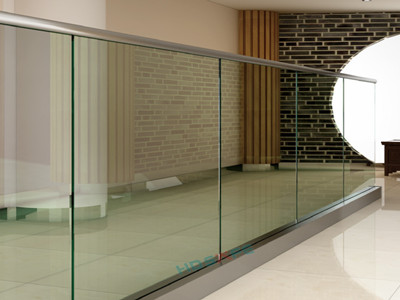
 Mar 25,2025
Mar 25,2025 
